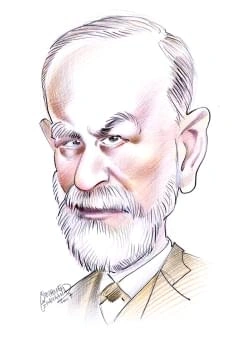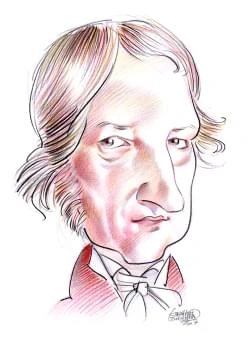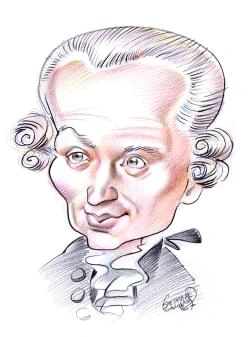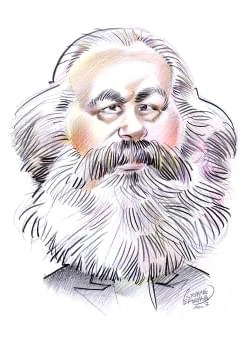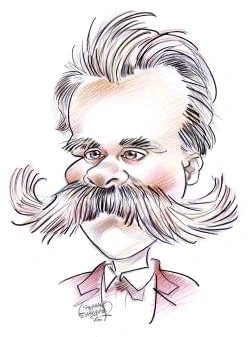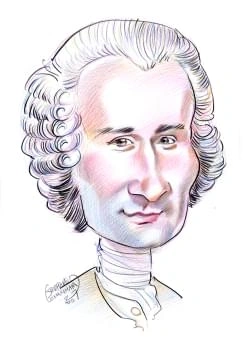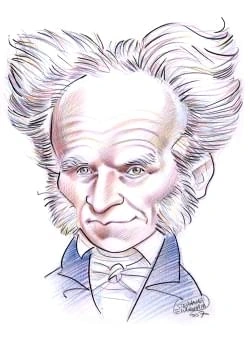43 résultats pour "rising"
-
Weather.
hours, and the snow can be much deeper in places where the wind piles it up in drifts. Extraordinarily deep snows sometimes accumulate on the upwind side ofmountain slopes during severe winter storms or on the downwind shores of large lakes during outbreaks of polar air. VI WIND Wind is the horizontal movement of air. It is named for the direction from which it comes—for example, a north wind comes from the north. In most places near theground, the wind speed averages from 8 to 24 km/h (from 5...
-
Unemployment.
set up to monitor the economy and provide advice to the president and Congress. Between 1945 and 1990 nine cyclical swings in unemployment occurred; all weresmaller than the 1930s depression. During this period the unemployment rate was as low as 2.9 percent (1953) and as high as 9.7 percent (1982). Because of cutbacksin the unemployment insurance program and changes in the nature of employment during the 1980s, however, only 37 percent of jobless workers received benefits in1990. Fears that the...
-
Canadian Literature
I
INTRODUCTION
Canadian Literature, literature of the peoples of Canada.
William Henry DrummondPoet William Henry Drummond described the lives of French Canadian farmers, loggers, and rural workers in verse thatreflected their mix of French and English speech. He gained recognition in the late 19th and early 20th centuries.Library of Congress In the early 19th century, most Canadian poetry imitated earlier British poetry. Poets Oliver Goldsmith (grandnephew of the Anglo-Irish writer of the same name),Charles Sangster, Charles Mair, and Levi Adams exemplified literary...
-
Jazz
I
INTRODUCTION
Joshua Redman
Saxophonist Joshua Redman, a graduate of Harvard University, became a fast-rising star in jazz in the 1990s.
performed a highly produced, jazz-inspired form of blues that was popular in traveling minstrel shows and vaudeville. Thisexample is from the song “St. Louis Blues,” written by American composer and trumpet player W. C. Handy in 1914 andrecorded by Smith in 1925."St. Louis Blues" performed by Bessie Smith, from The Riverside History of Classic Jazz (Cat.# Riverside RB-005) Riverside Records under master license to Fantasy, Inc. All rightsreserved./Frank DriggsCollection/Archive Photos Jazz is ro...
-
Antarctica - Geography.
The maximum area of sea ice surrounding Antarctica each winter varies from year to year. A marked decline during the 1970s appears to have reversed in more recentdecades, except in the Antarctic Peninsula area. This area has lost almost 40 percent of its sea ice since the start of the 1980s. Sea ice is important to marine life. Krillfeed on algae that live under the sea ice and are released when the ice melts in spring and summer. In turn, many marine animals feed on krill. Emperor penguinsbreed...
-
Africa.
The highest elevations in Africa are found in the various ranges of East Africa. After Kilimanjaro, the next highest peaks are Mount Kenya (5,199 m/17,057 ft), north ofKilimanjaro in central Kenya; Margherita Peak (5,109 m/ 16,762 ft) in the Ruwenzori Range on the border between Uganda and the Democratic Republic of the Congo(DRC); Ras Dashen (4,620 m/ 15,157 ft) in the Ethiopian Highlands of northern Ethiopia; Mount Meru (4,565 m/ 14,977 ft), close to Kilimanjaro in Tanzania; and MountElgon (4,...
-
Africa - Geography.
The highest elevations in Africa are found in the various ranges of East Africa. After Kilimanjaro, the next highest peaks are Mount Kenya (5,199 m/17,057 ft), north ofKilimanjaro in central Kenya; Margherita Peak (5,109 m/ 16,762 ft) in the Ruwenzori Range on the border between Uganda and the Democratic Republic of the Congo(DRC); Ras Dashen (4,620 m/ 15,157 ft) in the Ethiopian Highlands of northern Ethiopia; Mount Meru (4,565 m/ 14,977 ft), close to Kilimanjaro in Tanzania; and MountElgon (4,...
-
Meteorology.
to find the corresponding relative humidity and dew-point temperature. III SPECIAL METEOROLOGICAL INSTRUMENTS Meteorologists have developed several sophisticated instruments that measure multiple physical characteristics of the air simultaneously and at more than one location.The most important of these special instruments are radiosondes, Doppler radar, and weather satellites. A Radiosonde A radiosonde measures air temperature, air pressure, and humidity from the earth’s surface up to an alt...
-
-
Ireland - country.
F Plants and Animals Ireland’s animal life does not differ markedly from that of England or France. Over many centuries of human settlement almost all of Ireland’s natural woodlands werecleared, and indigenous animals such as bear, wolf, wildcat, beaver, wild cattle, and the giant Irish deer (a type of fallow deer) gradually disappeared. However, thehardy and versatile Connemara pony, Ireland’s only native pony breed, has been used by Irish farmers since prehistoric times. The great auk, or gar...
-
Volcano.
before eruption. Very violent explosive eruptions are called Plinian eruptions, after Roman naturalist Pliny the Elder. These eruptions can last for several hours to daysand eject a large amount of pyroclastic material. Some volcanoes can produce much more energetic eruptions that eject materials farther from the vents because oftheir andesitic and dacitic composition. Andesitic and dacitic lava is generally thicker than basaltic lava. Stiff lava generally produces more-explosive eruptions. B No...
-
New York - geography.
The Adirondack province consists of a large highland area occupying 26,000 sq km (10,000 sq mi) in the northeastern quarter of the state. The region is domelike inshape, with the higher elevations toward the east. The western Adirondack province is more a rugged hill region and not truly mountainous. Geologically, this area isrelated to the Laurentian Upland, or Canadian Shield, which lies north of the St. Lawrence River, for it is composed of the same very old igneous rocks, principallygranite...
-
New York - USA History.
The Adirondack province consists of a large highland area occupying 26,000 sq km (10,000 sq mi) in the northeastern quarter of the state. The region is domelike inshape, with the higher elevations toward the east. The western Adirondack province is more a rugged hill region and not truly mountainous. Geologically, this area isrelated to the Laurentian Upland, or Canadian Shield, which lies north of the St. Lawrence River, for it is composed of the same very old igneous rocks, principallygranite...
-
Brazil - country.
occasional droughts. Brazil contains a wealth of mineral and plant resources that have not yet been fully explored. It possesses some of the world’s largest deposits of iron ore and containsrich deposits of many other minerals, including gold and copper. Brazil’s fossil fuel resources are modest, but this limitation is offset by the considerable hydroelectricpotential of the nation’s many rivers. Although Brazil is an important producer of tropical crops, areas of highly fertile land are limited...
-
South America - geography.
B Natural Regions Tierra del Fuego, ArgentinaUshuaia, on Argentina’s island of Tierra del Fuego, is the world’s southernmost city. Argentina claims part of the Tierra del Fuegoarchipelago, including the largest island, known as Tierra del Fuego or Great Island, and Staten Island. Chile claims the remainder ofthe islands in the territory.R. Van Nostrand/Photo Researchers, Inc. Rising abruptly from the northwestern and western coasts of the continent are the Andes. They consist of a single chain...
-
Aboriginal Australians - history.
Current archaeological evidence suggests that human occupation of Australia began around 50,000 to 60,000 years ago. The first settlers are believed to havemigrated from Southeast Asia in gradual stages, by way of the islands of Indonesia. Around 50,000 years ago sea levels were as much as 120 m (390 ft) lower thanthey are today, and Australia was joined with New Guinea and Tasmania to form one giant landmass called Sahul, or Greater Australia. Scholars believe that the firstmigrants to Sahul ca...
-
Excerpt from Bleak House - anthology.
patience, courage, hope; so overthrows the brain and breaks the heart; that there is not an honourable man among its practitioners who would not give—who does notoften give—the warning, 'Suffer any wrong that can be done you, rather than come here!' Who happen to be in the Lord Chancellor's court this murky afternoon besides the Lord Chancellor, the counsel in the cause, two or three counsel who are never inany cause, and the well of solicitors before mentioned? There is the registrar below...
-
-
Jupiter (planet) - astronomy.
Beneath the supercritical fluid zone, the pressure reaches 3 million Earth atmospheres. At this depth, the atoms collide so frequently and violently that the hydrogenatoms are ionized—that is, the negatively charged electrons are stripped away from the positively charged protons of the hydrogen nuclei. This ionization results in asea of electrically charged particles that resembles a liquid metal and gives rise to Jupiter’s magnetic field. This liquid metallic hydrogen zone is 30,000 to 40,000 k...
-
Great Depression in the United States - U.
prices would continue to rise and they could soon sell their stocks at a profit. The widespread belief that anyone could get rich led many less affluent Americans into the market as well. Investors bought millions of shares of stock “on margin,” arisky practice similar to buying products on credit. They paid only a small part of the price and borrowed the rest, gambling that they could sell the stock at a highenough price to repay the loan and make a profit. For a time this was true: In 1928 the...
-
Terrorism.
exploitation, ethnic discrimination, and religious persecution. Perceived inequities in the distribution of wealth and political power have led some terrorists to attempt tooverthrow democratically elected governments. To achieve a fairer society, they would replace these governments with socialist or communist regimes. Left-wingterrorist groups of the 1960s and 1970s with such aims included Germany’s Baader-Meinhof Gang, Italy’s Red Brigades, and the Weather Underground ( see Weathermen) in the...
-
Arizona - geography.
of the Mogollon Rim, the Little Colorado draws very little water from a relatively large watershed, usually containing a mere trickle of water in its riverbed. The ColoradoRiver’s principal tributary is the Gila River, which flows all the way across the southern part of the state from New Mexico to the California border. From the mountainsand plateaus of central Arizona, the Gila River receives the Salt, Agua Fria, and Hassayampa rivers. The Salt River is itself fed by the Verde River. The Gila...
-
Arizona - USA History.
of the Mogollon Rim, the Little Colorado draws very little water from a relatively large watershed, usually containing a mere trickle of water in its riverbed. The ColoradoRiver’s principal tributary is the Gila River, which flows all the way across the southern part of the state from New Mexico to the California border. From the mountainsand plateaus of central Arizona, the Gila River receives the Salt, Agua Fria, and Hassayampa rivers. The Salt River is itself fed by the Verde River. The Gila...
-
Industrial Revolution
I
INTRODUCTION
Industrial Revolution, widespread replacement of manual labor by machines that began in Britain in the 18th century and is still continuing in some parts of the world.
The most important advance in iron production occurred in 1784 when Englishman Henry Cort invented new techniques for rolling raw iron, a finishing process thatshapes iron into the desired size and form. These advances in metalworking were an important part of industrialization. They enabled iron, which was relativelyinexpensive and abundant, to be used in many new ways, such as building heavy machinery. Iron was well suited for heavy machinery because of its strength anddurability. Because of t...
-
Industrial Revolution .
The most important advance in iron production occurred in 1784 when Englishman Henry Cort invented new techniques for rolling raw iron, a finishing process thatshapes iron into the desired size and form. These advances in metalworking were an important part of industrialization. They enabled iron, which was relativelyinexpensive and abundant, to be used in many new ways, such as building heavy machinery. Iron was well suited for heavy machinery because of its strength anddurability. Because of t...
-
Africa - history.
Africa’s other major mountainous regions occur at the northern and southern fringes of the continent. The Atlas Mountains, a system of high ranges, extend for 2,200 km(1,400 mi) across Morocco, Algeria, and Tunisia, roughly parallel to the northern coast. These ranges enclose a number of broad inland basins and plateaus. In the west, theHigh (or Grand) Atlas contains Toubkal (4,165 m/ 13,665 ft), the highest peak of the system. Toward the east, the Atlas consists of two parallel ranges: the Tell...
-
-
Africa.
The highest elevations in Africa are found in the various ranges of East Africa. After Kilimanjaro, the next highest peaks are Mount Kenya (5,199 m/17,057 ft), north ofKilimanjaro in central Kenya; Margherita Peak (5,109 m/ 16,762 ft) in the Ruwenzori Range on the border between Uganda and the Democratic Republic of the Congo(DRC); Ras Dashen (4,620 m/ 15,157 ft) in the Ethiopian Highlands of northern Ethiopia; Mount Meru (4,565 m/ 14,977 ft), close to Kilimanjaro in Tanzania; and MountElgon (4,...
-
Iran - country.
Zagros mountains. In the more arid central part of the country, wild pistachio and other drought-resistant trees grow in areas that have not been disturbed by humanactivity. Tamarisk and other salt-tolerant bushes grow along the margins of the Dasht-e Kavir. A wide variety of native mammals, reptiles, birds, and insects inhabit Iran. Many species of mammals—including wolves, foxes, bears, mountain goats, red mountainsheep, rabbits, and gerbils—continue to thrive. Others—including Caspian tigers,...
-
From Robinson Crusoe - anthology.
How strange a Chequer-Work of Providence is the Life of Man! and by what secret differing Springs are the Affections hurry'd about as differing Circumstancespresent! To Day we love what to Morrow we hate; to Day we seek what to Morrow we shun; to Day we desire what to Morrow we fear; nay even tremble at theApprehensions of; this was exemplify'd in me at this Time in the most lively Manner imaginable; for I whose only Affliction was, that I seem'd banished from humanSociety, that I was alone, cir...
-
Extinction (biology) - biology.
III ROLE OF MASS EXTINCTION IN EVOLUTION Historically biologists—most famous among them British naturalist Charles Darwin—assumed that extinction is the natural outcome of competition between newlyevolved, adaptively superior species and their older, more primitive ancestors. These scientists believed that newer, more highly evolved species simply drove less well-adapted species to extinction. That is, historically, extinction was thought to result from evolution. It was also thought that this...
-
Excerpt from Dombey and Son - anthology.
light. Rivers and seas were formed to float their ships; rainbows gave them promise of fair weather; winds blew for or against their enterprises; stars and planetscircled in their orbits, to preserve inviolate a system of which they were the centre. Common abbreviations took new meanings in his eyes, and had sole reference tothem. A.D. had no concern with anno Domini, but stood for anno Dombei—and Son. He had risen, as his father had before him, in the course of life and death, from Son to D...
-
Gothic Art and Architecture
I
INTRODUCTION
Notre Dame Cathedral, Paris
Notre Dame Cathedral, in Paris, was begun in 1163 and completed for the most part in 1250.
and by external arches, called flying buttresses. Consequently, the thick walls of Romanesque architecture could be largely replaced by thinner walls with glass windows,and the interiors could reach unprecedented heights. A revolution in building techniques thus occurred. With the Gothic vault, a ground plan could take on a variety of shapes. The general plan of the cathedrals, however, consisting of a long three-aisled nave interceptedby a transept and followed by a shorter choir and sanctuary,...
-
Jean Chrétien.
In 1969, when Chrétien introduced policy proposals based on this principle, indigenous peoples reacted with such hostility that he ultimately had to withdraw theproposals. Despite this and other clashes with indigenous leaders, Chrétien continued to work at improving the government relations with them. By the time he left theDepartment of Indian and Northern Affairs in 1974, he had earned their respect and appreciation for his efforts. Following the 1974 election, Trudeau appointed Chrétien pres...
-
Jean Chrétien - Canadian History.
In 1969, when Chrétien introduced policy proposals based on this principle, indigenous peoples reacted with such hostility that he ultimately had to withdraw theproposals. Despite this and other clashes with indigenous leaders, Chrétien continued to work at improving the government relations with them. By the time he left theDepartment of Indian and Northern Affairs in 1974, he had earned their respect and appreciation for his efforts. Following the 1974 election, Trudeau appointed Chrétien pres...
-
-
Washington, D.
structures built according to L’Enfant’s plan. During the War of 1812, British troops set fire to the White House, destroying its interior. President James Madison and hisfamily lived in the Octagon while the White House was being rebuilt. South of the Federal Triangle is the Mall, a narrow park stretching roughly 1.6 km (1 mi) from the Capitol to the Washington Monument. Although the Mall officially endsat 14th Street, landscaped greenery extends to the Potomac. The Washington Monument, whose m...
-
Newfoundland and Labrador - Geography.
Precipitation averages about 1,120 mm (about 44 in) yearly in Newfoundland. In Labrador precipitation varies from about 1,020 mm (about 40 in) in the southeast toabout 510 mm (about 20 in) in the extreme north. Heavy winter snowfalls are common, especially in Newfoundland. D Plant Life About one-third of Newfoundland is forested, and most of the rest of the island is made up of barren areas of reindeer moss and lichens. The forests consist almostentirely of conifers. The most important species...
-
Newfoundland and Labrador - Canadian History.
Precipitation averages about 1,120 mm (about 44 in) yearly in Newfoundland. In Labrador precipitation varies from about 1,020 mm (about 40 in) in the southeast toabout 510 mm (about 20 in) in the extreme north. Heavy winter snowfalls are common, especially in Newfoundland. D Plant Life About one-third of Newfoundland is forested, and most of the rest of the island is made up of barren areas of reindeer moss and lichens. The forests consist almostentirely of conifers. The most important species...
-
George Bush.
1986 it was folded into Harken Energy Corporation, another Texas petroleum company. Bush served as a consultant and a member of Harken’s board of directors. In 1987 Bush relocated his family to Washington, D.C., to assist his father in his bid to become president. He worked as a campaign adviser at his father’s nationalcampaign headquarters, serving as a liaison to the media and to conservative and Christian leaders. He was a trusted confidant of his father and mother, whosometimes dispatched Bu...
-
George Bush - USA History.
1986 it was folded into Harken Energy Corporation, another Texas petroleum company. Bush served as a consultant and a member of Harken’s board of directors. In 1987 Bush relocated his family to Washington, D.C., to assist his father in his bid to become president. He worked as a campaign adviser at his father’s nationalcampaign headquarters, serving as a liaison to the media and to conservative and Christian leaders. He was a trusted confidant of his father and mother, whosometimes dispatched Bu...
-
France - country.
In both the Paris and Aquitaine basins, fertile soils derived from limestone and wind-deposited dust, called loess, have supported prosperous agriculture since ancienttimes. Other lowlands in France are scattered and relatively small. They include the Alsace Plain in the east, bordering Germany, the valley of the Rhône River in thesoutheast, and the Languedoc Plain along the Mediterranean coast. A2 Uplands France contains several regions of uplands, the worn down remains of ancient mountain sys...
-
Puerto Rico - geography.
the length of the day remains fairly constant throughout the year. San Juan has a mean July temperature of 28°C (83°F) and a mean January temperature of 25°C (77°F). The average temperature of the seawater surrounding theisland is 27°C (81°F), with little variation during the course of the year. The entire island is cooled by the trade winds from the northeast. This air also contains much water vapor. As the air is forced to rise over the mountains, it becomescooler and the water vapor condenses...
-
Ancient Egypt.
around 4500 BC. The style and decoration of the pottery found at these sites differ from those of pottery found in Upper Egypt. The northern type eventually fell out of use. Other differences between the peoples in Upper Egypt and Lower Egypt include the nature of their architecture and the arrangements for burial of the dead, thelatter perhaps signifying differing religious beliefs. B Unification and Early Dynastic Period By 3500 BC, the settlement of Hierakonpolis, located on the west bank...
-
-
Ancient Egypt - USA History.
around 4500 BC. The style and decoration of the pottery found at these sites differ from those of pottery found in Upper Egypt. The northern type eventually fell out of use. Other differences between the peoples in Upper Egypt and Lower Egypt include the nature of their architecture and the arrangements for burial of the dead, thelatter perhaps signifying differing religious beliefs. B Unification and Early Dynastic Period By 3500 BC, the settlement of Hierakonpolis, located on the west bank...
-
Space Exploration - astronomy.
to produce 250,000 newtons (56,000 lb) of thrust. The Germans launched thousands of V-2s carrying explosives against targets in Britain and The Netherlands. Whilethey did not prove to be an effective weapon, V-2s did become the first human-made objects to reach altitudes above 80 km (50 mi)—the height at which outer spaceis considered to begin—before falling back to Earth. The V-2 inaugurated the era of modern rocketry. A2 Early Artificial Satellites During the years following World War II, the...
-
Global Warming.
some of the warming influence of increasing greenhouse gases. A1 Carbon Dioxide Carbon dioxide is the second most abundant greenhouse gas, after water vapor. Carbon dioxide constantly circulates in the environment through a variety of naturalprocesses known as the carbon cycle. It is released into the atmosphere from natural processes such as eruptions of volcanoes; the respiration of animals, whichbreathe in oxygen and exhale carbon dioxide; and the burning or decay of plants and other organic...
}})
